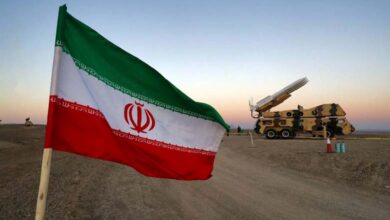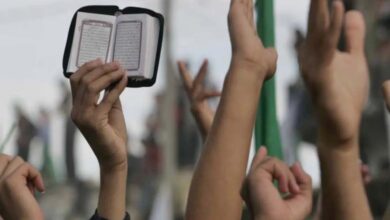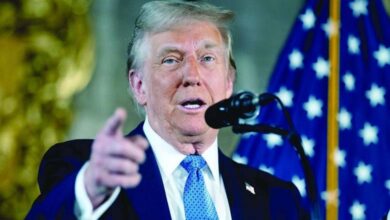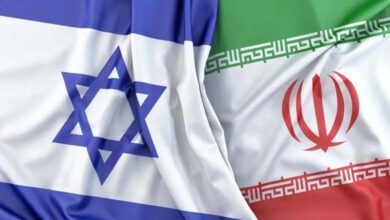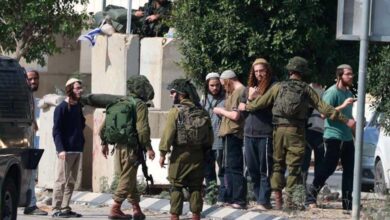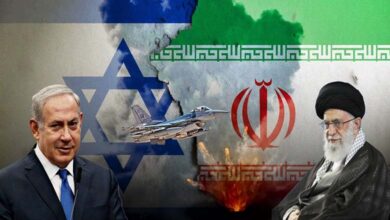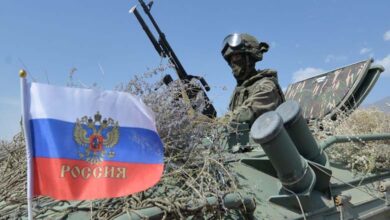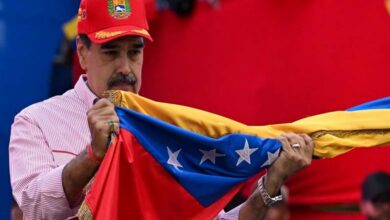Inside the Formation of Egypt’s Muslim Brotherhood Terror Cells: Revelations in a Podcast
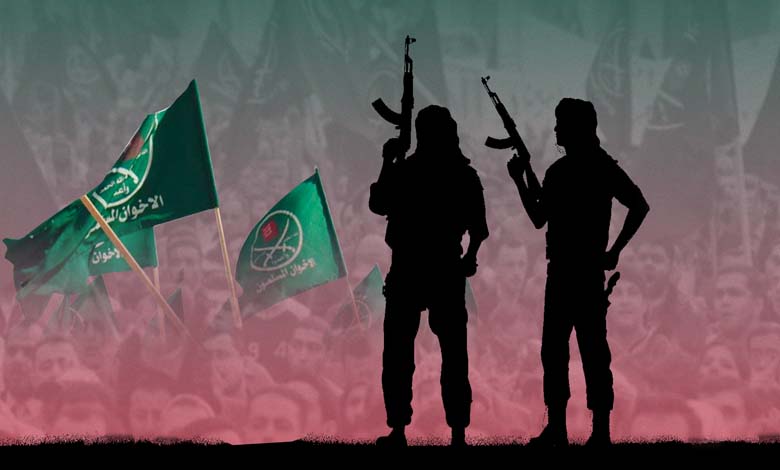
Despite a long history of deception, the Muslim Brotherhood struggles to distance itself from its violent past, as confessions from within the organization continue to surface.
Each time the Brotherhood leadership attempts to portray itself as peaceful, insiders reveal the inner workings of the group’s militarization and how it has legitimized bloodshed under strict religious and organizational doctrine.
-
From Hassm to Midan: Egypt’s Muslim Brotherhood attempts to reengage chaos
-
Their Hands Stained with Egyptian Blood: Who Are the Muslim Brotherhood Figures Yahya Moussa and Alaa al-Samahi?
Recently, the armed faction “Hasm“, affiliated with the Brotherhood and listed as a terrorist group in multiple countries, resurfaced. Alongside its return, prominent Brotherhood figures shared testimonies about the re-establishment of the group’s military arm, historically known as the “Special Organization” or the Brotherhood’s secret apparatus.
These are not isolated accounts. One major testimony came from Mohamed Rafiq Manaa, known as Mohamed Montasser, the Brotherhood’s former spokesperson, during a podcast with Yahya Moussa—convicted in Egypt for leading Hasm’s terrorist operations. Montasser admitted that the Brotherhood’s leadership collectively approved armed resistance, contradicting Istanbul-based leaders like Mahmoud Hussein who claim the group only engages in peaceful political activism.
-
Ayman Soliman: Detained Muslim Brotherhood Figure in the US Uncovered by a Support Campaign
-
Muslim Brotherhood’s gloating over the death of al-Madkhali reveals deep doctrinal hostility… Why was he their most formidable opponent?
Magdy Shalash, a senior Brotherhood member, also previously confirmed this shift toward militarization during a 2013 interview on the Brotherhood-affiliated channel “Mekameleen”, stating that the decision was sanctioned by top leaders, including then-acting Supreme Guide Mahmoud Ezzat (arrested in August 2020).
Militias and Armed Formations: Back to the Brotherhood’s Roots
Montasser revealed that even before the Brotherhood’s fall from power in June 2013, armed cells were created under the name “Headquarters Protection Units,” rejecting any police involvement. A former Brotherhood official disclosed that these units were inspired by Iran’s Revolutionary Guard and trained in camps such as one in King Mariout, Alexandria.
-
Israel Applies Political Pressure to Curb Egypt’s Armament Plans
-
Sources Reveal the Truth Behind Moataz Matar’s Alleged Arrest: Extradition Rumors and Muslim Brotherhood Moves
Despite internal warnings, the Brotherhood moved forward, arming young members and assigning them missions based on their geographical locations.
Following their ousting, the group chose confrontation with the state, rejecting mediation efforts—even those led by senior Brotherhood figures like Ahmed Fahmy, the former Speaker of Egypt’s Shura Council and brother-in-law of Mohamed Morsi. The Brotherhood‘s General Shura Council approved a total escalation.
-
Muslim Brotherhood’s Hasm: A Leap into the Void Amid Fragile Regional Conditions
-
The Muslim Brotherhood and June 30: A Divided Diaspora and a Movement in Clinical Death
Armed attacks by factions like “Molotov”, “Wala’”, and “Unknowns”—all Brotherhood offshoots—soon followed. After the Rabaa dispersal, the organization lost central coordination, but militant activity continued independently until leaders like Mohamed Kamal rebuilt the internal network in 2014.
Two Strategies for Institutionalizing Violence
Under Mohamed Kamal’s leadership, the Brotherhood adopted two plans. The first, “February Plan”, emphasized mass protests and attempted sit-ins at Tahrir Square but was rejected. The second, “August Plan” or the “Exhaustion, Confusion, and Decisiveness Plan”, explicitly called for armed violence to overthrow the Egyptian state.
-
Muslim Brotherhood Divisions Worsen… Rising Conflict between London and Istanbul Factions
-
The New “Khot Al-Saeed”… A “Suspicious” Connection to the Muslim Brotherhood
This was accompanied by a six-month study prepared by the Brotherhood’s Sharia Committee, led by Magdy Shalash, titled “The Jurisprudence of Popular Resistance to the Coup,” which declared opponents of the Brotherhood legitimate targets for killing. This was later reinforced by the “Kinana Call,” signed by Brotherhood leaders both inside and outside Egypt, inciting violence.
The Brotherhood convened a consultative council where 67 out of 81 members voted for the adoption of the armed strategy, leading to the emergence of advanced militant groups like “Revolutionary Punishment” and “Popular Resistance,” responsible for bombings and assassinations.
-
Experts Reveal the Muslim Brotherhood’s History of Violence and Terrorism in the Arab Region – Details
-
Anniversary of January 25: How 14 Years of Divisions Have Disrupted the Mind of the Muslim Brotherhood
The plan envisioned successive six-month phases of escalating violence, culminating in decisive attacks involving Libyan militias to seize power. However, Egypt’s security services preempted most of these threats through arrests and targeted operations.
When Mahmoud Ezzat realized the plan had failed, he dissolved the committee in May 2015 and formed a new one, still including Kamal, indicating his support for violence was strategic rather than moral.
Later, internal rifts led to Kamal’s breakaway faction, now known as the “General Office” or “Brotherhood – Change Current,” which continues militant activities under groups like “Hasm” and “Liwa al-Thawra.”
-
Why Did the Muslim Brotherhood Reject the Document on Combating Violence Against Women?
-
Lies, Calumny, and Falsification… This is how the Muslim Brotherhood violates the noble Sharia
Expert: Brotherhood Embraces Terrorism as Doctrine
Legal expert and Islamist movements specialist Sabra El-Qasemi stated that “the Muslim Brotherhood considers terrorism a religious duty, and assassinations a prophetic tradition,” as per their foundational literature. He added that attempts to form a Revolutionary Guard in 2013 were documented and blocked by Egyptian intelligence.
El-Qasemi warned that current Brotherhood cells, such as “the Joker” and factions linked to Hasm, are plotting a new wave of terror with support from regional powers. He praised Egypt’s counterterrorism efforts and expressed confidence that the Brotherhood’s strategy would fail: “Egypt has dismantled far more complex terror networks before.”
-
Media Recalls the Crimes of the Muslim Brotherhood and Their Attempt to “Burn Egypt”
-
The Muslim Brotherhood and Lies: The group promotes old videos to deceive Egyptian public opinion
-
Charges of espionage and endangering state security follow the Muslim Brotherhood fugitives abroad
-
The Muslim Brotherhood Faces Unprecedented Internal Crisis… Contradictory Statements Reflect Confusion
-
Brotherhood Initiative to Seek Pardon in Exchange for Withdrawal from Politics
-
The Muslim Brotherhood turns to a foreign company to secure their virtual meetings… Why?
-
Rumors of the Muslim Brotherhood Reach Raba’a and Nahda… Egypt Denies


